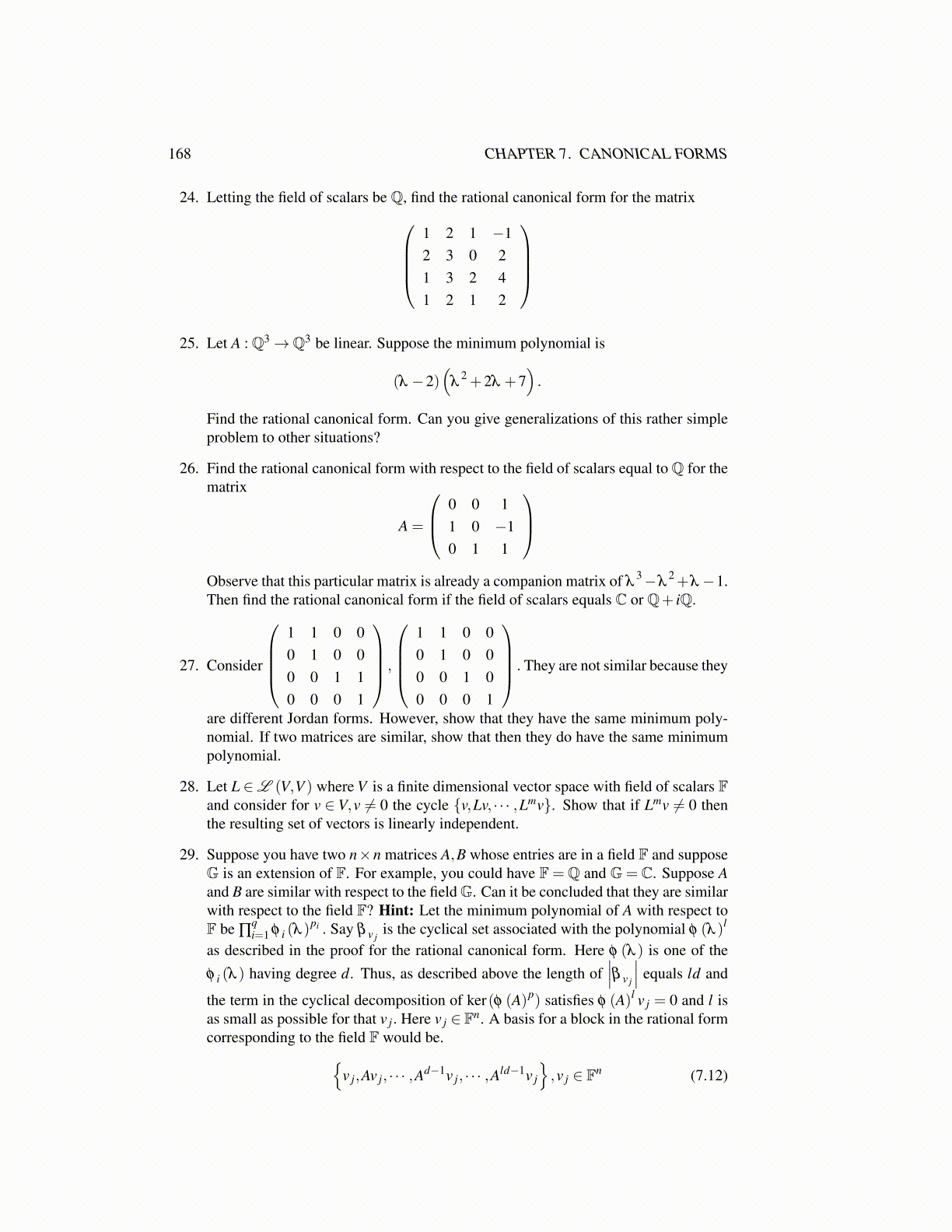
168 CHAPTER 7. CANONICAL FORMS
24. Letting the field of scalars be Q, find the rational canonical form for the matrix1 2 1 −12 3 0 21 3 2 41 2 1 2
25. Let A :Q3→Q3 be linear. Suppose the minimum polynomial is
(λ −2)(
λ2 +2λ +7
).
Find the rational canonical form. Can you give generalizations of this rather simpleproblem to other situations?
26. Find the rational canonical form with respect to the field of scalars equal toQ for thematrix
A =
0 0 11 0 −10 1 1
Observe that this particular matrix is already a companion matrix of λ
3−λ2+λ−1.
Then find the rational canonical form if the field of scalars equals C or Q+ iQ.
27. Consider
1 1 0 00 1 0 00 0 1 10 0 0 1
,
1 1 0 00 1 0 00 0 1 00 0 0 1
. They are not similar because they
are different Jordan forms. However, show that they have the same minimum poly-nomial. If two matrices are similar, show that then they do have the same minimumpolynomial.
28. Let L ∈L (V,V ) where V is a finite dimensional vector space with field of scalars Fand consider for v ∈ V,v ̸= 0 the cycle {v,Lv, · · · ,Lmv}. Show that if Lmv ̸= 0 thenthe resulting set of vectors is linearly independent.
29. Suppose you have two n×n matrices A,B whose entries are in a field F and supposeG is an extension of F. For example, you could have F=Q and G= C. Suppose Aand B are similar with respect to the fieldG. Can it be concluded that they are similarwith respect to the field F? Hint: Let the minimum polynomial of A with respect toF be ∏
qi=1 φ i (λ )
pi . Say β v jis the cyclical set associated with the polynomial φ (λ )l
as described in the proof for the rational canonical form. Here φ (λ ) is one of theφ i (λ ) having degree d. Thus, as described above the length of
∣∣∣β v j
∣∣∣ equals ld and
the term in the cyclical decomposition of ker(φ (A)p) satisfies φ (A)l v j = 0 and l isas small as possible for that v j. Here v j ∈ Fn. A basis for a block in the rational formcorresponding to the field F would be.{
v j,Av j, · · · ,Ad−1v j, · · · ,Ald−1v j
},v j ∈ Fn (7.12)